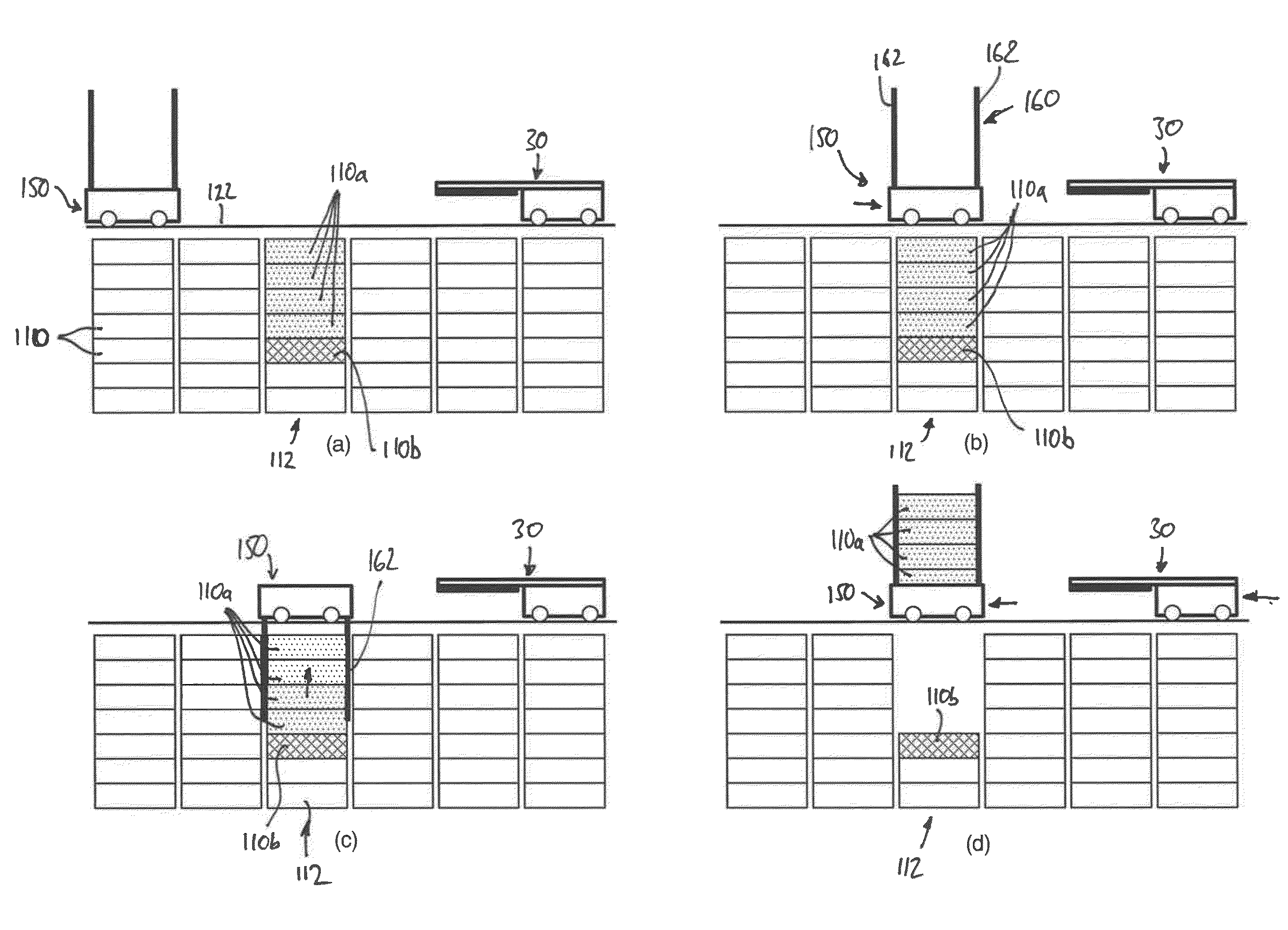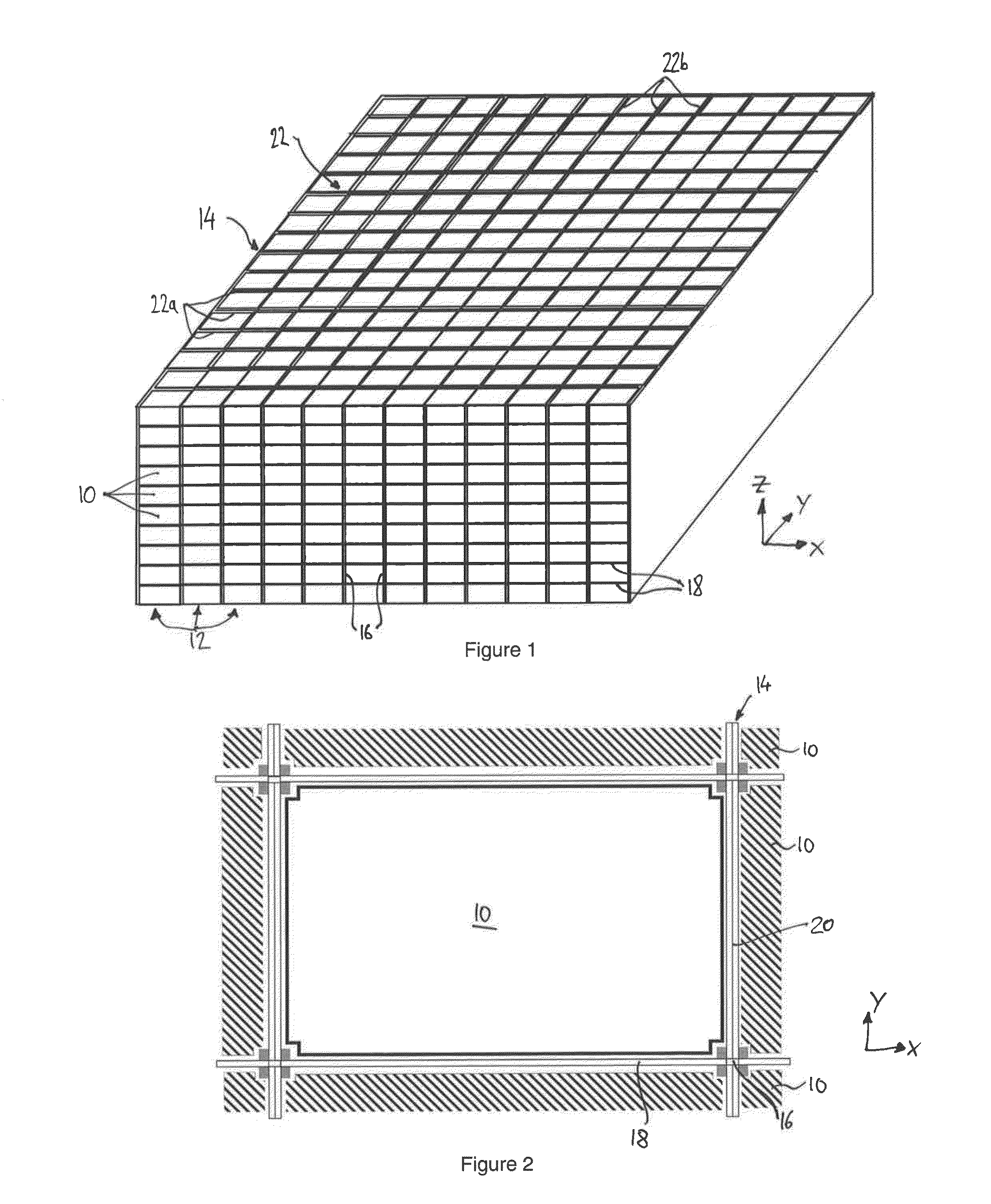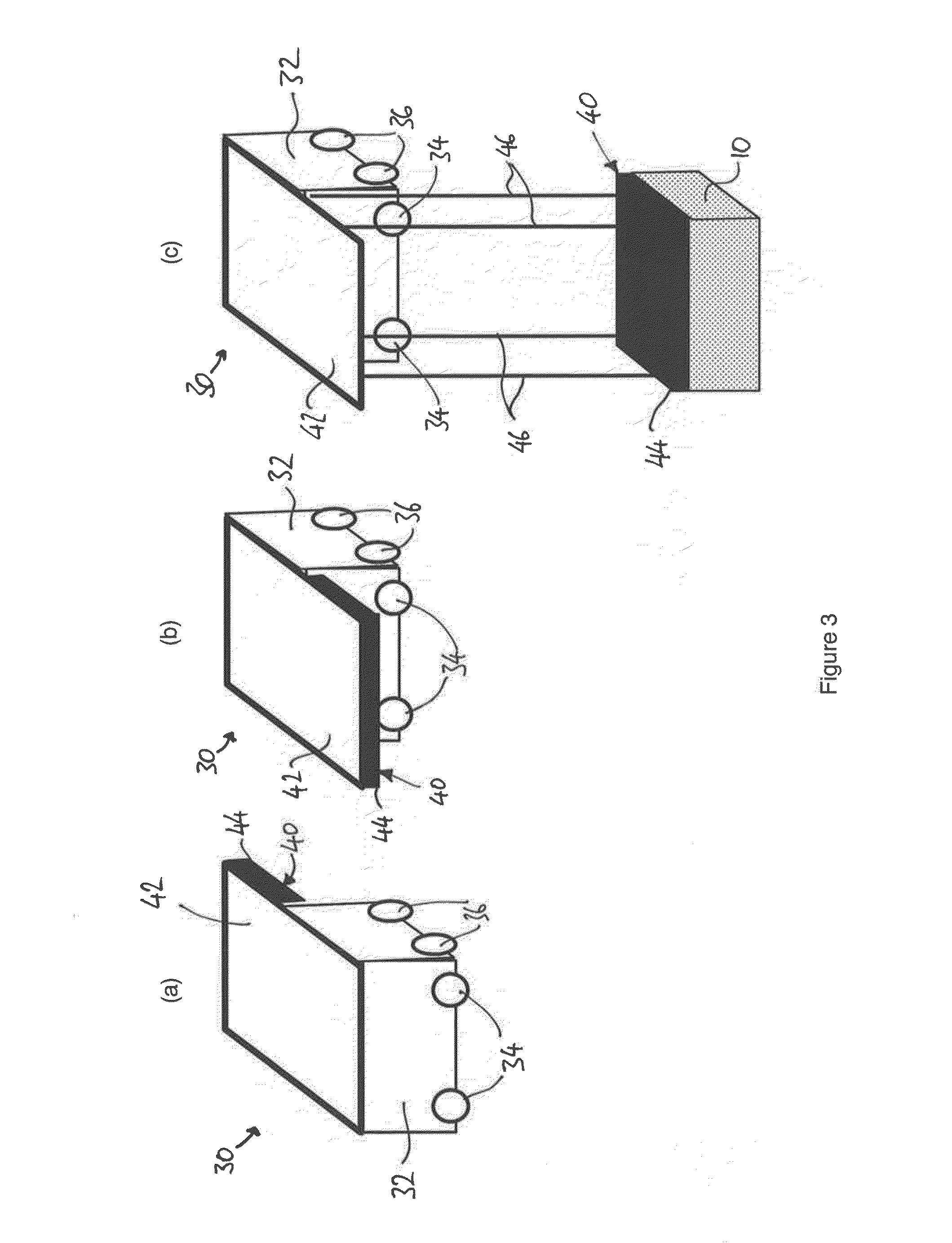Storage systems and methods for retrieving units from a storage system
a storage system and storage technology, applied in the field of robotic systems, can solve the problems of low storage density of such systems, inability to select a single container, and inability to adapt well to the selection of a single container, so as to achieve the effect of improving stability
- Summary
- Abstract
- Description
- Claims
- Application Information
AI Technical Summary
Benefits of technology
Problems solved by technology
Method used
Image
Examples
Embodiment Construction
[0102]FIG. 6 is a perspective view of a storage system 100 according to a first embodiment of the present invention. The storage system 100 is generally similar to the known system described above with reference to FIGS. 1 to 5, and comprises a plurality of storage containers or bins 110 stacked on top of one another to form a plurality of stacks 112. The stacks 112 are arranged within a frame structure 114.
[0103]The frame structure 114 comprises a plurality of upright members 116 that extend in the Z direction and support horizontal members 118, 120. A first set of parallel horizontal members 118, arranged in the X direction, is disposed perpendicular to a second set of parallel horizontal members 120 (not shown in FIG. 6), arranged in the Y direction. The horizontal members 118, 120 form a plurality of horizontal grid structures supported by the upright members 116. The members 116, 118, 120 are typically manufactured from metal. The bins 110 are stacked between the members 116, 1...
PUM
 Login to View More
Login to View More Abstract
Description
Claims
Application Information
 Login to View More
Login to View More - R&D
- Intellectual Property
- Life Sciences
- Materials
- Tech Scout
- Unparalleled Data Quality
- Higher Quality Content
- 60% Fewer Hallucinations
Browse by: Latest US Patents, China's latest patents, Technical Efficacy Thesaurus, Application Domain, Technology Topic, Popular Technical Reports.
© 2025 PatSnap. All rights reserved.Legal|Privacy policy|Modern Slavery Act Transparency Statement|Sitemap|About US| Contact US: help@patsnap.com



